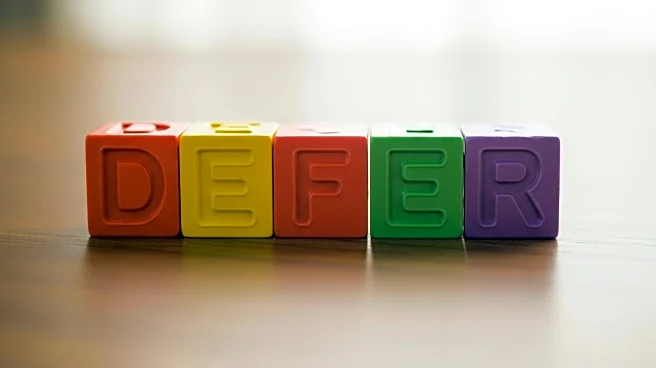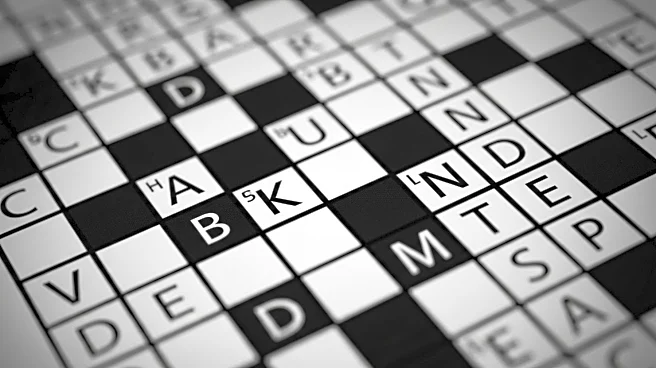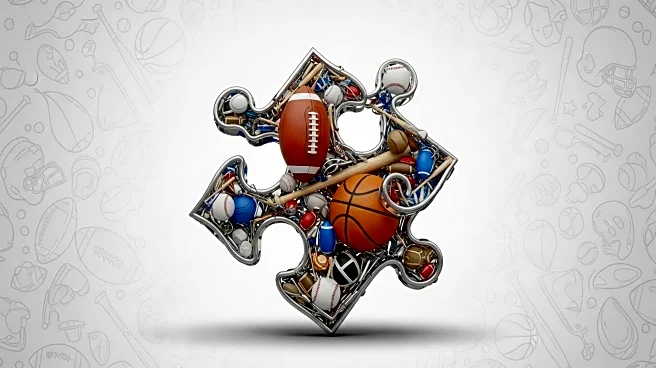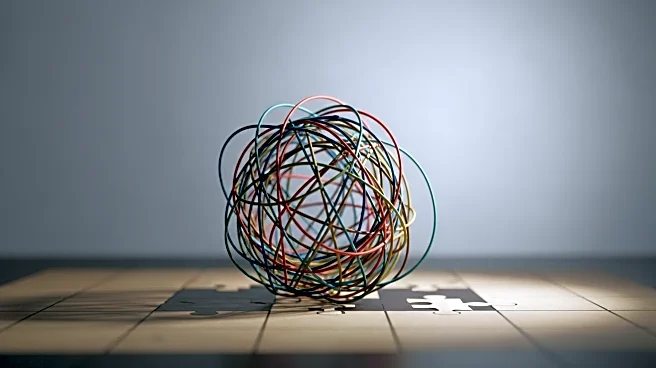What is the story about?
What's Happening?
The New York Times has published a Sunday crossword puzzle created by Adrianne Baik, a student at Harvey Mudd College. The puzzle, titled 'Gimme a Break!', incorporates a theme centered around the popular candy Kit Kat Minis. The theme is revealed at 112-Across, where the clue refers to 'bite-size chocolate-covered wafers,' a nod to the candy's jingle from the 1980s. The puzzle includes a double rebus in five locations, challenging solvers to think creatively. This is Baik's second crossword for The Times, following her debut in June. The puzzle's execution has been praised for its cleverness and charm, despite the potential controversy of product placement.
Why It's Important?
The inclusion of a well-known candy brand in a crossword puzzle highlights the intersection of popular culture and traditional media. This approach can attract a broader audience to the puzzle section, potentially increasing engagement among younger readers who may be familiar with the Kit Kat brand. Additionally, it showcases the creativity and innovation of young puzzle constructors like Adrianne Baik, who are bringing fresh perspectives to established platforms. The puzzle's success could encourage more media outlets to explore similar collaborations, blending entertainment with subtle marketing strategies.
What's Next?
As crossword puzzles continue to evolve, incorporating elements of popular culture and product references may become more common. This trend could lead to increased collaboration between media companies and brands, offering new advertising opportunities. For puzzle enthusiasts, this development might result in more diverse and engaging puzzles. Meanwhile, Adrianne Baik and other young constructors may gain more recognition and opportunities to contribute to major publications, further diversifying the voices and styles represented in the crossword community.
Beyond the Headlines
The use of product placement in puzzles raises questions about the balance between editorial content and advertising. While it can enhance the puzzle's appeal, it also blurs the line between entertainment and marketing. This trend may prompt discussions about the ethical implications of such practices, particularly in media outlets known for their editorial integrity. As the media landscape continues to change, finding the right balance will be crucial to maintaining reader trust.
AI Generated Content
Do you find this article useful?













